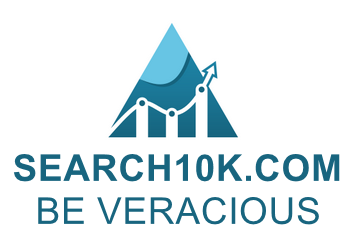Most people are unaware of how professional equity research actually operates, despite the fact that it influences billions of dollars’ worth of investments every day. What equity research analysts actually do, the main distinctions between buy-side and sell-side research, how analysts produce their reports and valuation models, the crucial tools they employ, and whether artificial intelligence will change the industry.
This guide covers everything you need to know, whether you’re thinking about a career in finance or you just want to know how Wall Street assesses stocks.
What Is Equity Research?
Equity research is the systematic analysis of publicly traded companies to provide investment recommendations through detailed financial modeling, industry analysis, and valuation assessments. Analysts evaluate 10-Ks, 10-Qs, earnings calls, and competitive dynamics to determine buy, hold, or sell ratings with specific price targets.
Research serves three critical functions in capital markets. First, it bridges information gaps between company management and investors through independent analysis. Second, it enhances price discovery by identifying valuation discrepancies and market inefficiencies. Third, it democratizes access to professional investment insights, though institutional investors receive more comprehensive coverage than retail participants.
Modern equity research combines quantitative modeling (DCF analysis, comparable company multiples) with qualitative assessments (management credibility, competitive moats). This dual approach produces actionable intelligence that influences trillions in global assets under management.
What Does an Equity Research Analyst Do?
Equity research analysts spend 60-70% of their time building financial models, analyzing SEC filings, and writing research reports on 15-20 companies within their coverage universe. Daily responsibilities include updating earnings models, conducting primary research through management calls and expert networks, and publishing investment recommendations.
The workflow starts before 6 AM with overnight news review and morning note preparation. Analysts scan 8-Ks for material changes, update models for new data, and communicate insights to institutional clients before the market opens. During earnings season, they publish previews highlighting key metrics and post-earnings reviews within hours of releases.
| Activity | Time Allocation | Key Output |
| Financial Modeling | 30-35% | DCF models, earnings projections |
| Report Writing | 20-25% | Initiation reports, earnings notes |
| Primary Research | 15-20% | Management meetings, channel checks |
| Client Interaction | 15-20% | Calls, conferences, roadshows |
| Market Monitoring | 10-15% | News flow, competitor analysis |
Beyond individual company analysis, analysts produce thematic research exploring sector trends like AI adoption, ESG considerations, or regulatory changes affecting multiple portfolio holdings.
What’s the Difference Between Buy-Side and Sell-Side Research?
Buy-side research serves internal portfolio managers at asset management firms like Fidelity and BlackRock, while sell-side research from investment banks targets external institutional clients. This fundamental distinction drives different incentives, workflows, and career paths.
| Aspect | Sell-Side | Buy-Side |
| Audience | External institutional clients | Internal portfolio managers |
| Coverage | 15-20 companies, deep coverage | 30-50 companies, targeted analysis |
| Compensation | Trading commissions, II rankings | Fund performance, alpha generation |
| Research Distribution | Public to clients, Bloomberg | Proprietary, confidential |
| Regulatory Oversight | FINRA Rule 2241, MiFID II | SEC investment adviser rules |
| Work Hours | 60-70 hours/week | 50-60 hours/week |
Sell-side analysts publish broadly, maintain high public profiles through Institutional Investor rankings, and generate revenue through trading commissions and corporate access. Buy-side analysts work confidentially, focusing purely on investment returns without marketing responsibilities.
MiFID II unbundled research payments from trading commissions, forcing sell-side firms to demonstrate explicit value. This accelerated consolidation, with top-tier analysts commanding premium pricing while mid-tier research faces budget pressure.
What Types of Equity Research Reports Exist?
Investment research encompasses five primary report categories, each serving specific client needs and market situations.
Initiation Reports (20-50 pages, sometimes up to 100 at major firms) establish comprehensive coverage with industry analysis, competitive positioning, multi-year projections, and detailed valuation work using DCF models, comparable analysis, and sum-of-the-parts valuation.
Earnings Updates (5-10 pages) dominate publication volume, with previews highlighting key metrics and reviews analyzing results versus consensus. These time-sensitive reports require preparation of multiple scenarios for rapid publication.
Thematic Research (20-30 pages) explores sector trends affecting multiple companies – electric vehicle adoption impact, regulatory changes, or technological disruption. These position investors for structural shifts.
Flash Notes (1-2 pages) respond to breaking news like M&A announcements or management changes within hours, providing immediate perspective on investment thesis implications.
Rating Changes (3-5 pages) explain upgrades, downgrades, or target adjustments with clear catalyst identification and sensitivity analysis showing various scenario outcomes.
Key Tools and Platforms Analysts Rely On
Bloomberg Terminal dominates equity research workflows with integrated data, analytics, and communication capabilities. Functions like {FA} for financial analysis, {COMP} for peer comparison, and {DDM} for dividend discount models streamline analysis. FactSet and S&P Capital IQ provide alternatives with superior screening capabilities and Excel integration.
Financial modeling happens primarily in Excel, where analysts build three-statement models projecting income statements, balance sheets, and cash flows. Python increasingly supplements Excel for data analysis, web scraping, and automation. Key Python libraries include pandas for data manipulation, yfinance for market data, and BeautifulSoup for parsing HTML.
SEC Filing Analysis Evolution: Traditional EDGAR searching faces limitations – single company filtering, exhibit noise, manual downloads. Modern platforms like Search10K transform filing analysis through:
- Natural language processing detecting theme-based keywords
- Multi-company filtering (analyzing NVDA + AMD + INTC simultaneously)
- Exhibit exclusion eliminating boilerplate false positives
- Bulk HTML exports and CSV downloads
- Custom theme tracking for specific phrases
Alternative data platforms provide satellite imagery, credit card spending, and web traffic data offering insights before quarterly reports. Data subscriptions often cost $25,000-200,000 annually, with bundled or specialized datasets exceeding $500,000 in some cases.
How Do You Write an Equity Research Report?
Effective research reports follow a standardized structure maximizing clarity while providing comprehensive analysis. The executive summary delivers the investment thesis, price target, and key catalysts in bullet format within the first page.
Core Components Structure:
- Investment Thesis (1 page): Rating, target, 3-5 key points
- Company Overview (2-3 pages): Business model, competitive advantages
- Financial Analysis (3-4 pages): Historical trends, future projections
- Valuation (2-3 pages): DCF, multiples, scenario analysis
- Risks (1 page): Quantified downside scenarios
Valuation sections must triangulate fair value using multiple methodologies. DCF analysis projects free cash flows discounted at WACC (typically 8-12%). Comparable company analysis benchmarks EV/EBITDA, P/E, and P/B multiples against peers. Precedent transactions establish acquisition value ranges.

Strong reports differentiate through proprietary insights from primary research – channel checks revealing market share shifts, expert network calls confirming technology advantages, or analysis of competitor SEC filings identifying strategic changes. Search10K’s theme detection across competitor 10-Ks helps identify industry inflection points before consensus recognition.
Where Can You Find Equity Research Reports?
Institutional investors access research through prime broker portals from Goldman Sachs, Morgan Stanley, and J.P. Morgan requiring substantial trading relationships. Retail investors have limited options for institutional-grade research.
Accessible Research Sources:
- Retail Brokers: Charles Schwab, TD Ameritrade provide Morningstar, CFRA reports
- Public Platforms: Seeking Alpha combines professional and crowdsourced analysis
- Company IR Sites: Consensus estimates and analyst coverage lists
- University Libraries: Thomson ONE, Mergent databases for students/alumni
- EDGAR: Direct access to source documents analysts analyze
The most effective approach combines available research with independent analysis of primary sources. SEC filings contain the same information professional analysts use – revenue segments, risk factors, management discussion. Tools enhancing EDGAR analysis help individual investors conduct institutional-quality research.
Can Equity Research Analysts Trade Stocks?
FINRA Rule 2241 prohibits analysts from trading securities within their coverage universe, including stocks, options, and bonds. This restriction extends to immediate family members and continues 30 days after dropping coverage.
Trading Restrictions Timeline:
- IPO/Offerings: 10-day quiet period after an IPO, 3-day after a secondary offering.
- Post-report trading: 5-7 day blackout on personal trades (firm policy, not FINRA).
- Rating changes: Analysts can’t trade against their published recommendations; extra blackout windows may apply by the firm.
- Holding periods: 30-60 day minimum hold for approved personal trades (firm compliance).
All transactions require pre-clearance through compliance systems checking restricted lists and investment banking conflicts. Surveillance systems monitor emails, calls, and trading patterns for violations. Penalties include termination, regulatory bars, and criminal prosecution for insider trading.
Despite restrictions, analysts maintain diversified portfolios through mutual funds, ETFs, and non-coverage securities.
Will AI Replace Equity Research Analysts?
According to PwC’s 2024 Global Investor Survey, 73% of institutional investors now use AI-powered tools, though only 12% report fundamental changes to their research process. Natural language processing excels at information extraction while humans provide judgment and relationship management.
AI Strengths:
- Processing thousands of SEC filings simultaneously
- Detecting sentiment changes across earnings calls
- Identifying statistical patterns in price movements
- Generating initial report drafts for routine updates
Human Advantages:
- Assessing management credibility through in-person meetings
- Conducting primary research via channel checks
- Understanding nuanced competitive dynamics
- Building relationships for corporate access
The optimal model combines AI’s processing power with human insight. Search10K platform uses NLP to identify accounting changes or risk factor evolution across hundreds of 10-Ks, flagging issues for human investigation. Analysts focusing on high-value activities while AI handles data processing will thrive. As businesses incorporate these tools into routine processes, the shift is quickening and analysts are able to concentrate on relationship-building and proprietary research instead of manually extracting data. Technology is elevating the role of analysts toward higher-value strategic insights rather than replacing them.
FAQ
What’s a typical equity research salary?
Entry-level associates earn $85,000-125,000 base with 30-70% bonuses. Senior analysts make $175,000-350,000 base with bonuses potentially exceeding base. MDs earn $400,000-1,000,000+ all-in compensation.
How many companies should analysts cover?
Sell-side analysts optimally cover 15-20 companies for deep expertise while maintaining quality. Buy-side analysts often monitor 20-40 companies, but selectively deep dive on the holdings most important to their fund’s portfolio.
What’s the difference between price targets and ratings?
Price targets represent 12-month fair value estimates. Ratings (buy/hold/sell) reflect expected returns versus market or sector, incorporating risk-adjusted return potential.
How accurate are analyst predictions?
Consensus earnings estimates typically have an average error of around 9-10%, with only a minority falling within 5% accuracy. Historically, buy-rated stocks in the U.S. have outperformed the market by about 2-4% per year on average, though results vary by period and sector.
Can retail investors legally access institutional research?
Yes, through broker-provided research from independent firms. However, bulge bracket sell-side research requires institutional status.
Which programming language should analysts learn first?
Python for data analysis, web scraping, and automation. SQL for database queries. VBA remains useful for Excel but is gradually being replaced.


Comments are closed